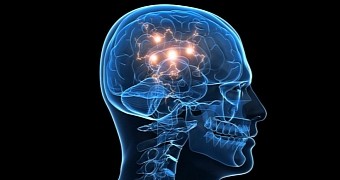In a recent paper in the journal Science, researchers with Sweden's Lund University and Karolinska Institutet describe a mechanism that appears to allow the brain to repair itself following a stroke.
This mechanism has until now only been documented in laboratory mice, but the scientists behind this research project argue that it might explain why it is that some stroke patients make an amazing recovery after one such incident.
The ins and outs of strokes
In their paper in the journal Science, the Lund University specialists and their colleagues at the Karolinska Institutet explain that strokes are caused by clots that either reach or form in the brain and that end up blocking a blood vessel.
By blocking blood vessels in the brain, clots make it impossible for nerve cells to have the oxygen that they need in order to stay alive delivered to them. During the fasting period that they are subjected to by blood clots, many neurons die.
The result is that the brain's activity patterns are disturbed. In severe cases, blood clot-induced strokes can cause a person to experience motor, sensory, and cognitive problems. Mind you, blood clots in the brain can even kill people.
Support cells to the rescue
Looking to gain a better understanding of what happens inside an otherwise healthy brain in the aftermath of a stroke, the scientists caused clots to form in the blood vessels feeding the neurons of several laboratory mice.
Once the animals were deliberately left impaired, the researchers closely monitored them and kept tabs on how their brain responded to the damage caused by the stroke.
It was thus discovered that, after a stroke, so-called support cells known to the scientific community as astrocytes stepped in and started forming brand new neurons in the brain regions affected by the prolonged lack of oxygen.
Specifically, these support cells first populated the affected areas and then moved on to form immature nerve cells. Eventually, these newly-formed cells turned into proper neurons and got to work helping the brain get back to business as usual.
“This is the first time that astrocytes have been shown to have the capacity to start a process that leads to the generation of new nerve cells after a stroke,” explained specialist Zaal Kokaia, professor of Experimental Medical Research at Lund University.
The support cells were found to be ready to form new nerve cells at all times. However, it was only when a signaling mechanism in the brain was suppressed following a stroke that they actually started fixing the damaged areas. “Even when we blocked the signaling mechanism in mice not subjected to a stroke, the astrocytes formed new nerve cells,” Zaal Kokaia wished to stress.
The importance of this research project
Specialist Zaal Kokaia and fellow researchers believe that their findings also hold true in the case of humans, and wish to look into the possibility to toy with this self-repairing mechanism to fix brain injuries caused not just by strokes, but also by disease and trauma.
Simply put, the scientists cannot help but wonder whether it might be possible to use this mechanism to treat neurodegenerative illnesses such as Parkinson’s and Alzheimer's, maybe even help people injured in accidents get back on their feet.
“One of the major tasks now is to explore whether astrocytes are also converted to neurons in the human brain following damage or disease,” Olle Lindvall, senior professor of Neurology, said in a statement.
“If the new mechanism also operates in the human brain and can be potentiated, this could become of clinical importance not only for stroke patients, but also for replacing neurons which have died, thus restoring function in patients with other disorders such as Parkinson’s disease and Huntington’s disease,” he added.

 14 DAY TRIAL //
14 DAY TRIAL //